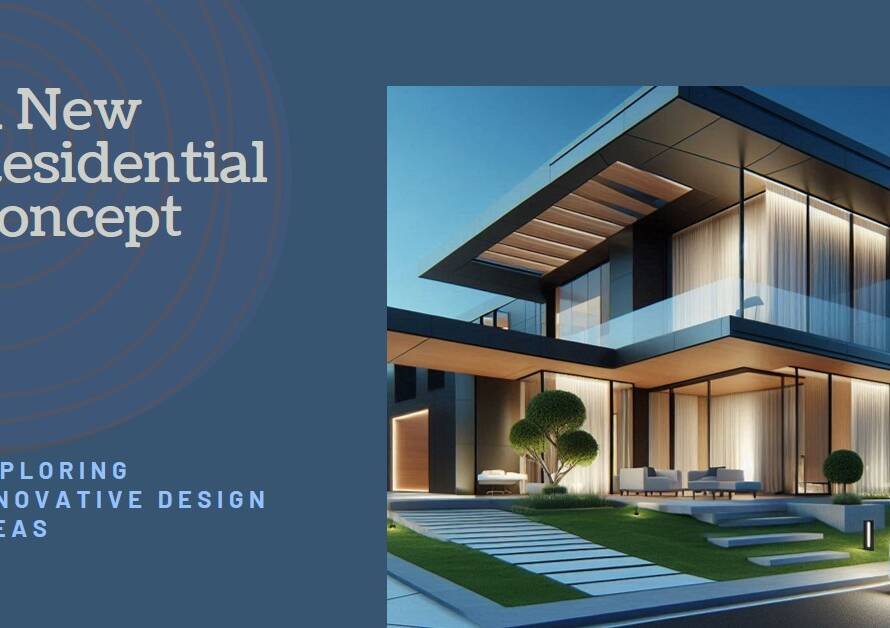
Table of Contents
Section 1: The Virtual Blueprint – 3D Modeling Redefines Architectural Planning
Title: Beyond Blueprints: How 3D Modeling Redefines Architectural Planning
Traditionally, architects relied on 2D blueprints to convey their design visions. However, the advent of 3D modeling has ushered in a new era, going beyond mere blueprints. This section delves into how 3D modeling becomes the virtual blueprint, allowing architects to visualize and communicate complex spatial concepts with unprecedented clarity. Through detailed and realistic renderings, architects can showcase not just the structure but also the intricate details, materials, and spatial relationships that define their designs.
Architectural planning is no longer confined to flat, abstract representations. 3D modeling enables architects to create immersive, three-dimensional environments, providing a holistic understanding of the proposed space. This shift enhances communication with clients, builders, and other stakeholders, fostering a shared vision that goes beyond what traditional blueprints could convey.
Section 2: Design Precision – Sculpting Realism with 3D Modeling
Title: The Sculptor’s Touch: Achieving Design Precision through 3D Modeling
In the realm of property architecture, precision is paramount. 3D modeling emerges as the sculptor’s tool, allowing architects to achieve a level of design precision that was once unimaginable. This section explores how architects can meticulously sculpt virtual structures, adjusting every detail, angle, and proportion with precision. The ability to visualize the design in three dimensions empowers architects to make informed decisions about aesthetics, functionality, and spatial flow.
The sculptor’s touch extends beyond the external structure to the interiors, capturing the essence of how spaces will be experienced. Architects can experiment with various design elements, from furniture placement to lighting scenarios, ensuring that the final result aligns with their creative vision. The precision afforded by 3D modeling elevates the design process, allowing architects to refine and perfect their creations with a level of detail that was previously challenging to achieve.
Section 3: Client Visualization – Bridging the Imagination Gap
Title: Imagination Unleashed: 3D Modeling Bridges the Visualization Gap
One of the pivotal reasons property architects are embracing 3D modeling is its ability to bridge the imagination gap. Clients often struggle to visualize designs based solely on 2D drawings or blueprints. This section explores how 3D modeling becomes a powerful tool for client visualization, offering a realistic preview of the proposed property. Clients can virtually walk through spaces, experiencing the design in a way that static images or drawings could never convey.
The immersive nature of 3D modeling enhances client engagement and understanding. It becomes a collaborative tool, enabling architects to incorporate client feedback more effectively. By bringing the design to life in a virtual environment, architects ensure that clients are not just informed but actively involved in the creative process, leading to designs that resonate more closely with their expectations.
Section 4: Time Efficiency – Streamlining Architectural Workflows
Title: Time Alchemy: How 3D Modeling Streamlines Architectural Workflows
Time efficiency is a precious commodity in the world of architecture. This section explores how 3D modeling acts as a form of time alchemy, streamlining architectural workflows and accelerating the design process. Unlike traditional methods that involve creating multiple drafts and iterations, architects can rapidly generate and modify 3D models, significantly reducing the time spent on design development.
The speed at which 3D models can be produced allows architects to meet tight project deadlines without compromising on quality. It facilitates a dynamic and iterative design process, enabling architects to experiment with various ideas and make real-time adjustments. Time efficiency becomes a transformative aspect, giving architects the flexibility to dedicate more time to creativity and problem-solving.
Section 5: Cost-Efficient Prototyping – Redefining Budget Dynamics
Title: Budget Brilliance: Redefining Prototyping Costs with 3D Modeling
Prototyping has historically been a costly affair in architecture. 3D modeling steps in as a budget-savvy alternative, redefining the cost dynamics associated with physical prototypes. This section explores how architects can create virtual prototypes with 3D modeling, eliminating the need for expensive physical models. The ability to visualize and refine designs digitally minimizes the expenses traditionally incurred in crafting intricate physical representations.
Cost-efficient prototyping becomes a game-changer, especially for smaller architectural firms or independent architects working with limited budgets. It allows architects to allocate resources more strategically, focusing on refining and perfecting the virtual model rather than investing in elaborate physical prototypes. The result is a more economical and sustainable approach to design development.
Section 6: Collaborative Synergy – Enhancing Team Dynamics
Title: Synergy Unleashed: How 3D Modeling Enhances Architectural Team Dynamics
Collaboration lies at the heart of successful architectural projects, and 3D modeling serves as a catalyst for enhancing team dynamics. This section delves into how architects and design teams can collaborate seamlessly through shared 3D models, fostering a sense of synergy. Virtual collaboration platforms enable team members to work on the same model concurrently, share ideas, and make real-time adjustments, promoting a more dynamic and efficient design process.
The collaborative synergy extends beyond the immediate project team to include clients, contractors, and other stakeholders. Architects can share 3D models in a format that is easily accessible and understandable by all parties involved. The result is a more transparent and inclusive design process, where everyone has a clear understanding of the project’s evolution.
Section 7: Sustainable Design Exploration – Eco-Friendly Architectural Practices
Title: Green Horizons: 3D Modeling Explores Sustainable Architectural Design
Sustainability is no longer just a buzzword; it’s a critical consideration in modern architecture. This section explores how 3D modeling facilitates the exploration of sustainable design practices. Architects can virtually experiment with eco-friendly materials, energy-efficient solutions, and green building strategies, visualizing the environmental impact of their designs in real-time.
3D modeling becomes a tool for architects to integrate sustainability seamlessly into their designs. It allows for the assessment of factors like daylighting, thermal performance, and energy consumption, empowering architects to make informed decisions that contribute to more eco-friendly and sustainable architectural practices.
Section 8: Technological Advancements – The Evolution of Architectural Visualization
Title: Pixels in Harmony: The Evolution of Architectural Visualization Through 3D Modeling
The evolution of architectural visualization is intertwined with the technological advancements in 3D modeling. This section explores how architects can leverage cutting-edge technologies, from realistic rendering engines to virtual reality applications, to push the boundaries of architectural visualization. The pixel harmony achieved through these technologies allows architects to create visuals that not only represent designs
accurately but also evoke emotional responses and immerse stakeholders in the envisioned spaces.
Technological advancements in 3D modeling extend beyond the design phase, influencing how architects present and communicate their ideas. Virtual reality experiences, for example, enable clients to virtually step into the designed space, fostering a deeper connection with the project. The evolution of architectural visualization through 3D modeling marks a paradigm shift in how architects leverage technology to enhance the overall design experience.


Section 9: Future Perspectives – Navigating the Architectural Horizon
Title: Horizon of Innovation: Future Perspectives in 3D Modeling for Property Architects
As property architects continue to embrace the virtual realm through 3D modeling, the future holds a horizon of innovation. This section explores the emerging trends and technologies that will shape the architectural landscape. From the integration of artificial intelligence for generative design to the exploration of augmented reality applications, architects are poised to navigate uncharted territories, pushing the boundaries of what is possible in the realm of virtual architectural design.
The horizon of innovation beckons, promising tools and techniques that will redefine the standards of excellence in property architecture. Designers and enthusiasts alike can anticipate a future where 3D modeling becomes not just a tool but a transformative force, shaping the way we conceive, communicate, and experience architectural designs.


